
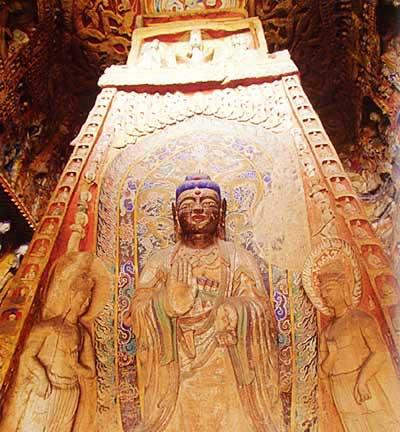 |
| Yungang Grottoes (CNTV) |
A 15-meter-high two-layer tower-shaped pylon is in the center of the sixth cave, with statues on each side and figures of Buddha, Bodhisattvas, Arhat and Apsaras around it. There are 33 statues of Buddha and their mounts on the top of the cave, and the preaching stories of Sakyamuni are carved on the walls and pylon. The sixth cave is the most representative cave of the Yungang Grottoes. The wooden three-layer eaves were established in front of the seventh cave, which is divided into two rooms, the front and back rooms. A Bodhisattva sits in back room. Shrines and statues are carved on east, west and south walls, with six life-like Bodhisattvas enshrined on the arch of the south gate. The lively and vivid relief carvings around lotuses are on the top of the cave. Kumura statues having five heads and six arms and riding on a peacock stand on either side of the eighth cave, with another statue having three heads and eight arms and riding on a cow standing on east side. This is extremely rare. The 12th cave has musicians from the heaven who have instruments in their hands, all looking different and vivid. The classical instruments such as panpipes and Konghou in their hands are very valuable and are important for studying China's music.
The 13th cave has a cross-foot Maitreya Buddha in the center, which is around 12 meters tall, and a Hercules statue standing behind the Maitreya Buddha's left arm. This is the only one of its kind in the Yungang Grottoes. The 15th cave has over 10,000 small seated Buddha statues, called the "Ten Thousand Buddha Cave." The 16th cave and the other four caves are called the "Tan Yao Five Caves" which were carved in the earliest period. The 16th cave is oval-shaped, with the main Buddha standing on a lotus and a thousand Buddha and shrines on the surrounding walls.
The 17th cave has a cross-footed Maitreya Buddha sitting on the Xu Mizuo seat, with seated statues on both sides. The 18th cave features the theme of "Buddhas of the past, present and future" and has Sakyamuni representing the Buddhas of the present in the center and Buddhas of the past and future on both sides. A Bodhisattva statue is between Sakyamuni and the other two Buddhas and five disciples of Sakyamuni are above the Bodhisattva. The heads of these disciples are separated with the wall and the bodies and legs gradually disappeared in the wall, which was influenced by the Gandhara art style in India and is rarely seen in the Yungang Grottoes. The 19th cave has a huge seated statue in the center. The 20th cave is in the open and its main Buddha is well-preserved above its chest with plump face, shoulder-length ears and bright eyes. It is amiable, energetic and powerful and is one of the most representative works in the Yungang Grottoes.




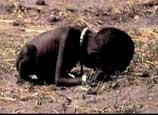
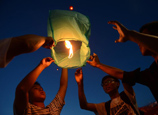
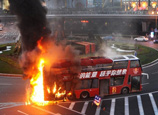




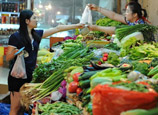






 Vehicles, pedestrians fall into river after bridge collapses in SW China
Vehicles, pedestrians fall into river after bridge collapses in SW China


![]()
